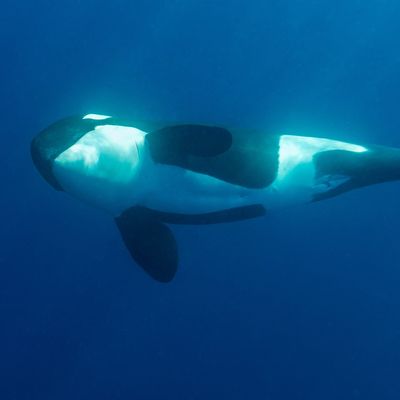
Two years ago, the world watched intently as a mother orca named Tahlequah mourned the unexpected loss of her calf by carrying its 300-pound body for 17 days. One researcher called Tahlequah’s oceanic journey, which spanned more than 1,000 miles, a “tragic tour of grief.” So imagine my delight upon learning that Tahlequah once again has a shot at motherhood.
According to the Seattle Times, scientists John Durban and Holly Fearnbach confirmed Tahlequah’s pregnancy after completing a long-term study of the endangered southern resident whales that swim around Puget Sound. Through non-invasive drone photography, the researchers discovered that whales in three separate pods — social groups of whales that are protective of one another — were carrying baby calves, including Tahlequah.
Sadly, I’ve since learned that the population to which Tahlequah belongs, at 72 orcas, is critically endangered. According to researcher Sam Wasser of the Center for Conservation Biology at the University of Washington, approximately two thirds of pregnancies among southern resident orcas are lost, which he believes may be a result of hunger-related stress.
As the Times notes, the typical gestation period for orcas is 18 months, which means birth is still a ways off for Tahlequah. Additionally, in the report, the researchers cautioned boaters against stressing the whales out by encroaching on their territory.
“People need to appreciate these are special whales in a special place at a vulnerable time,” Durban told the Times. “These whales deserve a chance.” Indeed! Please, let Tahlequah bear a healthy, blubbery calf. Speaking for myself, I am not resilient enough right now to endure what would be another devastating loss.

